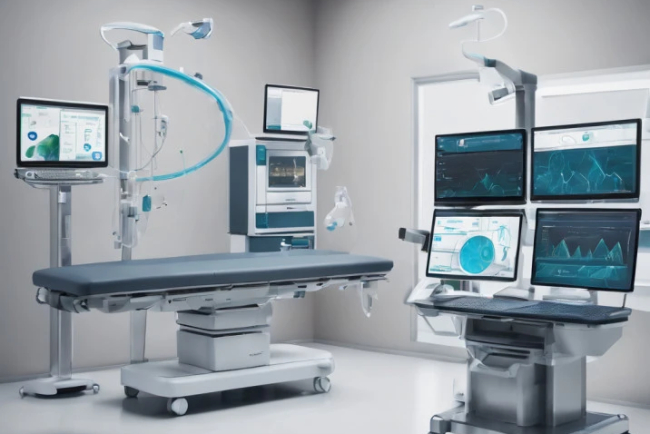Edge AI for Emergency Response
Empower emergency response teams with Edge AI technology for faster decision-making and improved situational awareness in critical situations.

Edge AI for Emergency Response
Edge AI technology is revolutionizing the way emergency response systems operate. By leveraging the power of artificial intelligence at the edge of the network, emergency responders can quickly and efficiently analyze data, make informed decisions, and respond to emergencies in real-time. This technology has the potential to save lives and improve the effectiveness of emergency response efforts.
Benefits of Edge AI for Emergency Response
There are several key benefits of using Edge AI in emergency response scenarios:
- Real-time Data Analysis: Edge AI enables emergency responders to analyze data quickly and efficiently at the edge of the network, without needing to send data to a central server. This real-time analysis allows responders to make informed decisions and take immediate action.
- Reduced Latency: By processing data at the edge of the network, Edge AI reduces latency in emergency response systems. This can be critical in situations where every second counts, such as natural disasters or medical emergencies.
- Improved Reliability: Edge AI systems are designed to operate even when connectivity is limited or unavailable. This ensures that emergency response systems remain operational in challenging environments or during network outages.
- Enhanced Privacy and Security: By processing data locally at the edge of the network, Edge AI systems help protect the privacy and security of sensitive information. This reduces the risk of data breaches or unauthorized access to critical data.
- Cost-effective Solutions: Edge AI technology can help reduce the costs associated with emergency response systems by minimizing the need for expensive centralized infrastructure. This makes it an attractive option for organizations with limited budgets.
Use Cases of Edge AI in Emergency Response
Edge AI technology can be applied to a wide range of emergency response scenarios, including:
- Disaster Response: Edge AI can help emergency responders quickly assess the extent of damage caused by natural disasters, such as earthquakes or hurricanes. By analyzing data from sensors and cameras at the edge of the network, responders can prioritize areas for assistance and deploy resources more effectively.
- Medical Emergencies: In medical emergencies, Edge AI can be used to analyze vital signs and patient data in real-time. This enables healthcare providers to make faster and more accurate diagnoses, leading to improved patient outcomes.
- Public Safety: Edge AI can enhance public safety by analyzing video feeds from surveillance cameras to detect suspicious activities or identify individuals in distress. This information can be used to alert authorities and dispatch emergency responders to the scene quickly.
- Traffic Management: Edge AI can optimize traffic flow and reduce congestion in emergency situations, such as accidents or road closures. By analyzing traffic data in real-time, traffic management systems can reroute vehicles, adjust traffic signals, and improve overall traffic efficiency.
Challenges and Considerations
While Edge AI offers significant benefits for emergency response systems, there are also challenges and considerations that organizations need to address:
- Data Privacy: Organizations must ensure that data collected and analyzed by Edge AI systems is handled in compliance with privacy regulations and guidelines. This includes implementing robust data encryption and access controls to protect sensitive information.
- Scalability: As emergency response systems grow in complexity and scale, organizations need to ensure that their Edge AI infrastructure can handle increasing amounts of data and processing demands. Scalability is key to maintaining the effectiveness of these systems over time.
- Interoperability: Different Edge AI systems and devices may use different protocols and standards, making interoperability a challenge. Organizations need to consider how to integrate various systems to ensure seamless communication and data exchange during emergency response operations.
- Training and Expertise: Implementing and managing Edge AI systems requires specialized skills and expertise. Organizations need to invest in training for their staff or collaborate with external partners to ensure the successful deployment and operation of these systems.
What's Your Reaction?

















